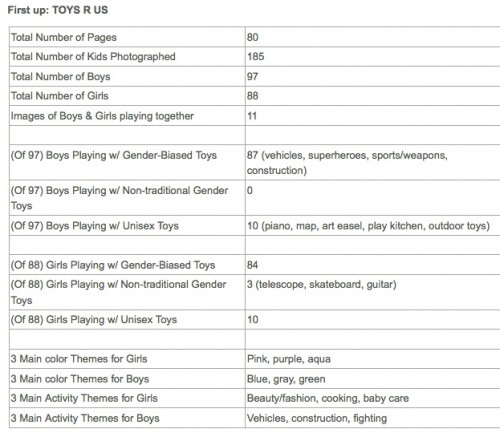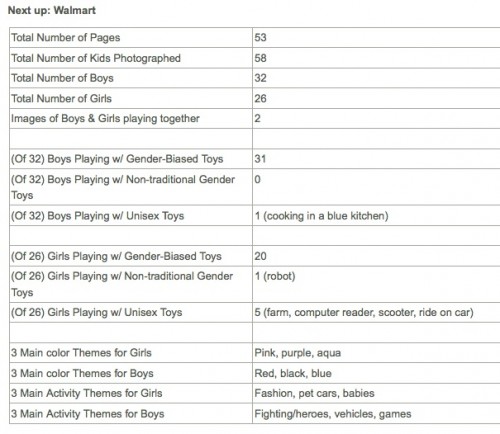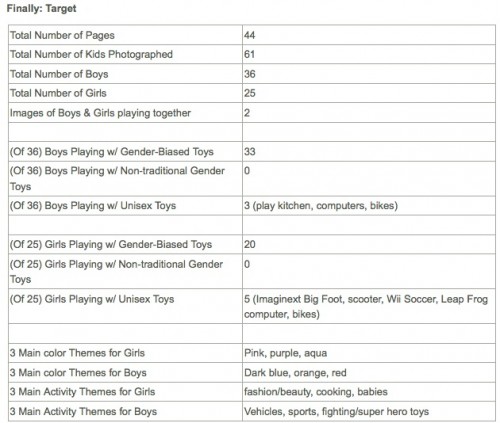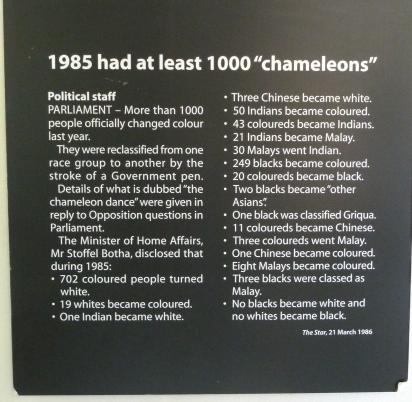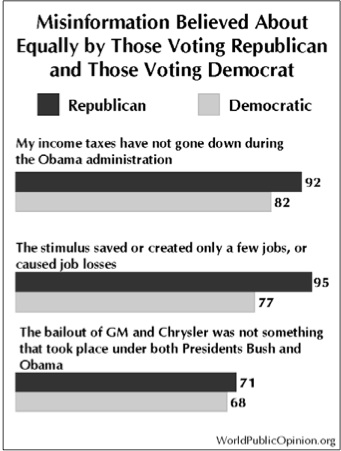Jessica B. sent in a link to a really great post over at Pigtail Pals. The author, Melissa, analyzed the contents of a number of holiday-season catalogs advertising toys. She tabulated how many girls and boys appear in each, how many are shown doing gender-stereotypical vs. non-stereotypical activities, and the main themes of the toys.
Here are the results for Toys ‘R’ Us:
Images from the catalog:
Wal-Mart:
Target:
It’s particularly striking to me how few images there are of girls and boys playing together, a predictable outcome, I suppose, of our insistence that boys and girls need different toys — since, if must play with different toys, they won’t be playing together.
Melissa discusses the specific images on several pages of the catalogs — check her full post out for more commentary.

